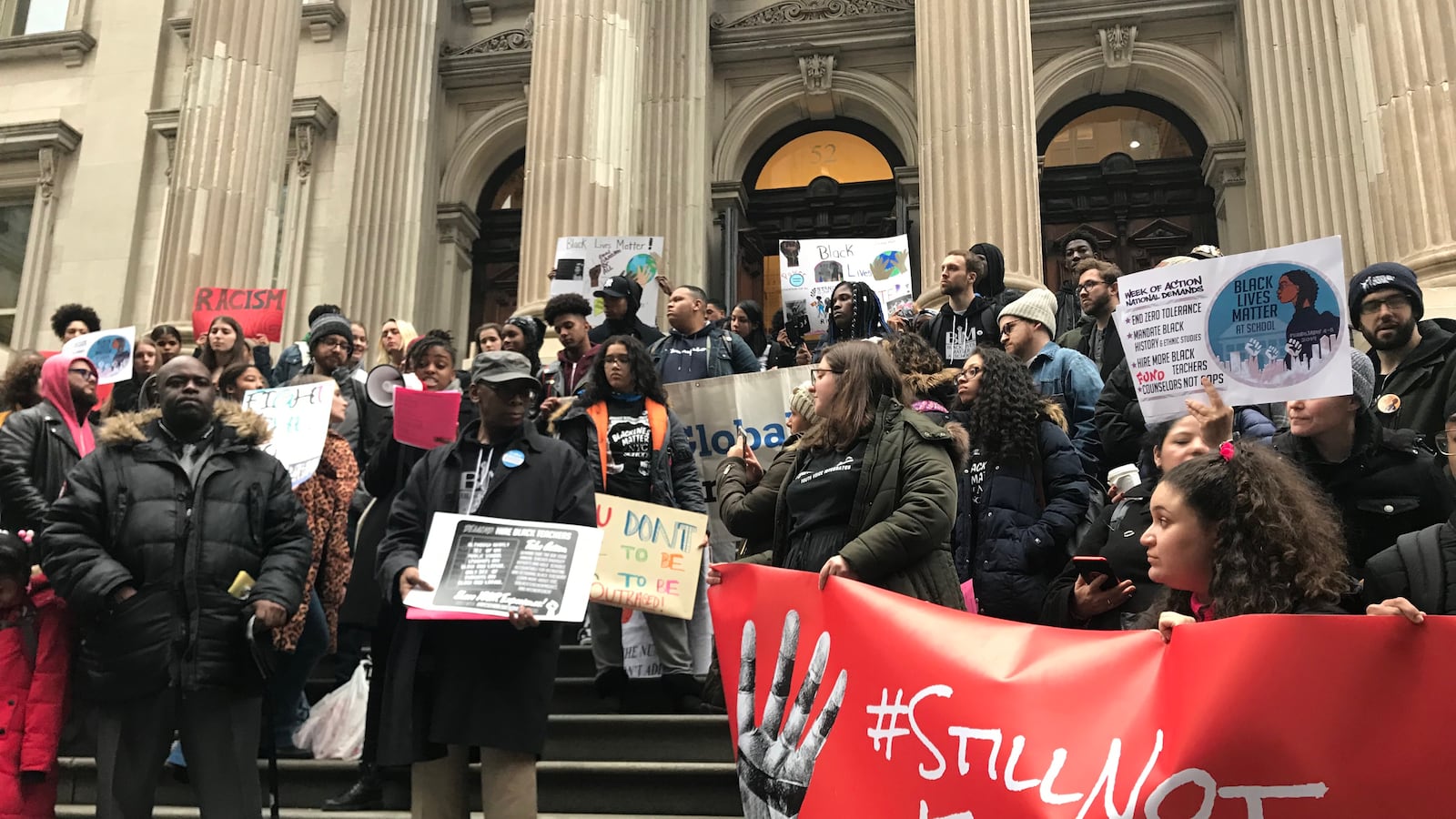New York city officials marked a move away from zero-tolerance school discipline policies on Thursday when it was announced that the city and the New York City Police Department had agreed to curb the presence and role of police officers in schools. For students who’ll be most affected, the changes, they say, are both welcome ― and long overdue.
The new agreement discourages police officials from sending students into the criminal justice system for low-level offenses such as marijuana possession and disorderly conduct. The change also applies to school officials, who are to avoid involving the police for minor infractions by students.
It’s the first major revision of the understanding between schools and police since Mayor Rudy Giuliani was in office.
Mendy Mendez, a junior at Vanguard High School, said he’s glad the city has decided to “prioritize caring for the educational and mental well being of students” over policing behavior.
“The presence of police in schools is totally unnecessary at the level that it’s at right now,” he said.
Mendez is a member of The Brotherhood/Sister Sol, a New York-based organization that offers an array of support services and enrichment activities for city youth and has advocated for greater investments in school counselors and other support staff for students.
In February, teens from across the city participated in rallies, calling for “more counselors than cops” in schools as part of Black Lives Matter at School, an annual, week-long series of workshops, demonstrations, and community events across the country.
“We want them to completely stop the hiring of school safety agents and increase the amount of support staff so there’s a better balance in schools,” Mendez said of the city.
Marcus Alston, a current junior at Pace High School, also welcomed the changes. “I personally don’t think that police belong in schools,” he said
Alston previously received a lengthy suspension from school, an ordeal he likened to jail. On Thursday, Mayor Bill de Blasio announced that the city would begin capping suspensions, which in the past could last as long as 180 days, at just 20 days in most cases.
Alston said the police presence at his high school is minimal compared to his former school, Evergreen Middle School for Urban Exploration, in Brooklyn, where he said officers would patrol the halls at all hours of the school day, and “treated the students like we were the threat.” At his current school, Alston said officers mainly stay at their posts near entrances and exits and rarely come near classrooms.
Still, tensions can arise. He recalled one incident where an argument between an officer and another high school student got “very verbally aggressive” and ended with the student in handcuffs.
To reduce such skirmishes, the new agreement also includes requirements for expanded training in de-escalation and conflict resolution for school safety agents and traditional patrol officers.
Not all students have a negative view of school safety agents. Shaena Gibson, a sophomore at Abraham Lincoln High School, said that while there were several officers who patrolled each floor of her school, she saw them as mostly “blending into the background” Her interactions with the agents, she said, have been generally positive. She knows other students in the school who have closer bonds with the officers, sharing inside jokes.
“A lot of students are really open with them,” she said.
Those relationships are why she thinks it’s a victory the city is adopting new regulations. If police officers are going to be part of student’s lives, Gibson said, they should be “dedicated to treating everyone fairly.”
“When there’s a high level of security, and they take it too far they’re setting up a negative mindset of police systems for young people,” Gibson said. So when students go out in the real world, “they already have a negative outlook on police officers,” she said. “Small steps like putting restrictions could improve the perception of the police.”
The original agreement between the education department and NYPD was signed in 1998 and was meant to be updated every four years. Negotiations over this overhaul have been stalled for years, and was delayed again when key reforms were stripped from a previous version of the new agreement. Chancellor Richard Carranza said in March he wasn’t satisfied with a draft agreement.
“The updated MOU and Patrol Guide reflect our values and demonstrate a clear commitment to safe and supportive learning environments for all students and staff,” Carranza said in a statement. “Taken together with our investments in restorative justice, and social-emotional learning, we’re ensuring each of our school communities has a foundation of positive relationships, respect, and support.”
Alston, who is a member of Teens Take Charge and Organizers for Equity New York, said he hopes city officials will now focus their attention on getting more guidance counselors into schools to address school discipline “holistically,” something a handshake deal on the city budget is poised to address.
He’s especially eager to see the changes go into effect in schools with a majority of black and Hispanic students, who he said are more likely to be wrongfully and heavily policed. “It’s about time,” he said.
Mendez, the junior at Vanguard High School, thinks city officials still have much more to do to address the needs of all students, but he’s optimistic the new agreement will bring positive change.
“This is a step in the right direction,” he said. “There’s no doubt that the effect of these regulations will be felt by the students who need it most.”

